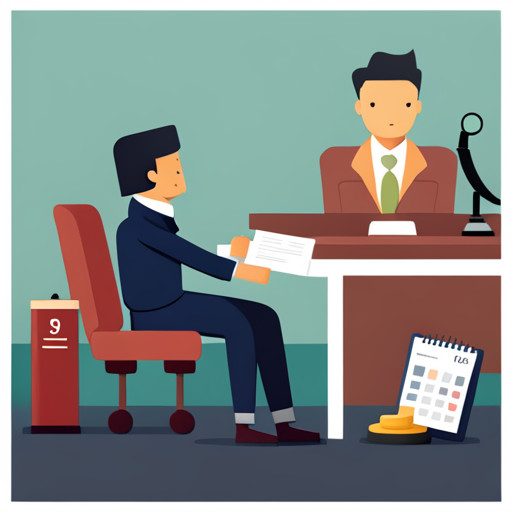4 Steps to Building a Strong Car Accident Injury Claim
In the unfortunate event of a vehicular collision, the necessity to construct a solid car accident injury claim arises.

This article elucidates the critical steps involved in building such a claim, including the establishment of fault, interactions with insurance adjusters, and understanding of legal obligations and settlement timelines.
Knowledge of these steps can significantly bolster the strength of a claim, guiding the afflicted party towards an optimal resolution.
Key Takeaways
- Determine if you need a car accident attorney or if you can handle the claim yourself
- Gather well-documented evidence to prove negligence, liability, and proximate cause
- Be cautious when dealing with the insurance adjuster and avoid saying anything that weakens your claim
- Consider the statute of limitations in your state and ensure you settle or file a lawsuit before the deadline
Understanding the Fundamentals of a Car Accident Injury Claim

Understanding the fundamentals of a car accident injury claim involves several steps. First, it is important to determine whether a car accident attorney is required. Next, the gathering of well-documented evidence is crucial to establish negligence and liability. This evidence will serve as the foundation on which the claim stands and can determine its success or failure. It is imperative to meticulously document and preserve every detail, no matter how minute, as failure to do so can significantly diminish the chances of a favorable outcome. Once the evidence is gathered, the next step is to prepare a demand letter to the insurance adjuster. This letter outlines the damages suffered and the compensation being sought. Following the car accident injury claim process meticulously is of paramount importance for a successful resolution.
Establishing the Fault of the Other Driver

Establishing the fault of the other driver requires the claimant to bear the burden of proof, providing compelling evidence that the accident directly resulted in their injuries.
Proving causation is a crucial component of this process. It entails demonstrating a casual link between the negligent actions of the other driver and the injuries sustained.
This involves gathering evidence such as medical reports, eyewitness testimonies, accident scene photographs, and police reports.
A meticulous collection and presentation of these pieces of evidence solidify the claimant's argument, persuading the adjuster or the court of the fault of the other driver.
Hence, the success of a car accident injury claim hinges largely on the claimant's ability to establish the fault of the other driver.
Navigating Interactions With the Insurance Adjuster

Navigating interactions with the insurance adjuster requires prudence, as their role is to protect the interests of the insurance company, which often involves minimising the payout. When dealing with an adjuster, four key guidelines are recommended:
1. Exercise caution when providing recorded statements. Any information divulged can potentially weaken the claim.
2. Refrain from hastily negotiating a settlement while undergoing treatment. This period is essential for accurately evaluating damages and losses.
3. Safeguard personal privacy by limiting the release of medical records, especially those unrelated to the accident.
4. Understand the implications of a settlement agreement before signing. If in doubt, seek professional advice.
Understanding the Settlement Timeline and Legal Obligations

Consideration of the settlement timeline and adherence to legal requirements are crucial elements in the process of resolving a motor vehicle collision case. Understanding the importance of medical documentation is essential, as well-presented evidence can substantiate claims effectively. Knowing when to involve an attorney can expedite proceedings and ensure compliance with all legal obligations.
| Factors | Importance | Action |
|---|---|---|
| Settlement timeline | Critical in timely resolution | Monitor closely |
| Legal requirements | Ensure valid claim | Adhere strictly |
| Medical documentation | Substantiate injury claims | Maintain thoroughly |
The attorney's role is particularly indispensable in complex cases. Their legal expertise can provide guidance on statutory deadlines, calculate appropriate compensation, and negotiate settlements effectively. Their involvement can be the difference between a successful claim and a forfeited right to compensation.
Frequently Asked Questions
What Should I Do Immediately After Being Involved in a Car Accident?”
Immediately following a car accident, emergency preparedness is critical. Safety is the first priority; ensuring the scene is secure and contacting emergency services if necessary.
Documentation of the incident, including photographs and witness accounts, is essential. Trauma coping strategies, such as seeking medical attention and emotional support, are vital.
It is recommended to contact a personal injury lawyer as soon as possible to protect legal rights and to commence the process of a potential injury claim.
How Can an Attorney Help Me in Building a Stronger Car Accident Injury Claim?”
Engaging an attorney significantly enhances the robustness of a car accident injury claim. Expertise in attorney selection can yield legal advantages such as comprehensive knowledge of personal injury law, astute negotiation skills, and adeptness at gathering and presenting compelling evidence.
Furthermore, attorneys can effectively navigate complex insurance procedures, ensuring the client's rights are protected. In essence, legal representation can potentially maximize the compensation received.
What Types of Damages Can I Seek Compensation for in My Car Accident Injury Claim?”
In a car accident injury claim, compensation can be sought for both economic and non-economic damages.
Economic damages encompass quantifiable losses such as medical expenses, loss of income, and property damage.
Non-economic damages, more elusive in nature, include pain and suffering, emotional distress, and loss of enjoyment of life.
Proper damage documentation is crucial for negotiating compensation, as it provides tangible proof of incurred losses and their impact on the claimant's life.
Can I Still File a Claim if I Was Partially at Fault for the Car Accident?”
In cases of car accidents, fault determination rules are applied to establish responsibility. Even when partial fault is attributed to a claimant, a claim may still be filed. However, this introduces the concept of contributory negligence, which may reduce the compensation received proportionate to the degree of fault.
The specifics of these rules can vary by jurisdiction, thus underlining the importance of understanding local laws and considering legal counsel for accurate advice and representation.
What Should I Do if the Insurance Company Denies My Claim or Offers a Lower Settlement Than Expected?”
In case of claim denial or receipt of a lower settlement than anticipated, strategies such as claim reevaluation and counter offers may be employed. Legal counsel should be sought to appropriately challenge the insurance company's decision. This might involve further evidence collection or negotiation with the insurer.
If these attempts remain unfruitful, the option of proceeding to a formal litigation process can be explored.

This post has been generated by AI and was not reviewed by editors. This is Not legal advice. Please consult with an attorney.




